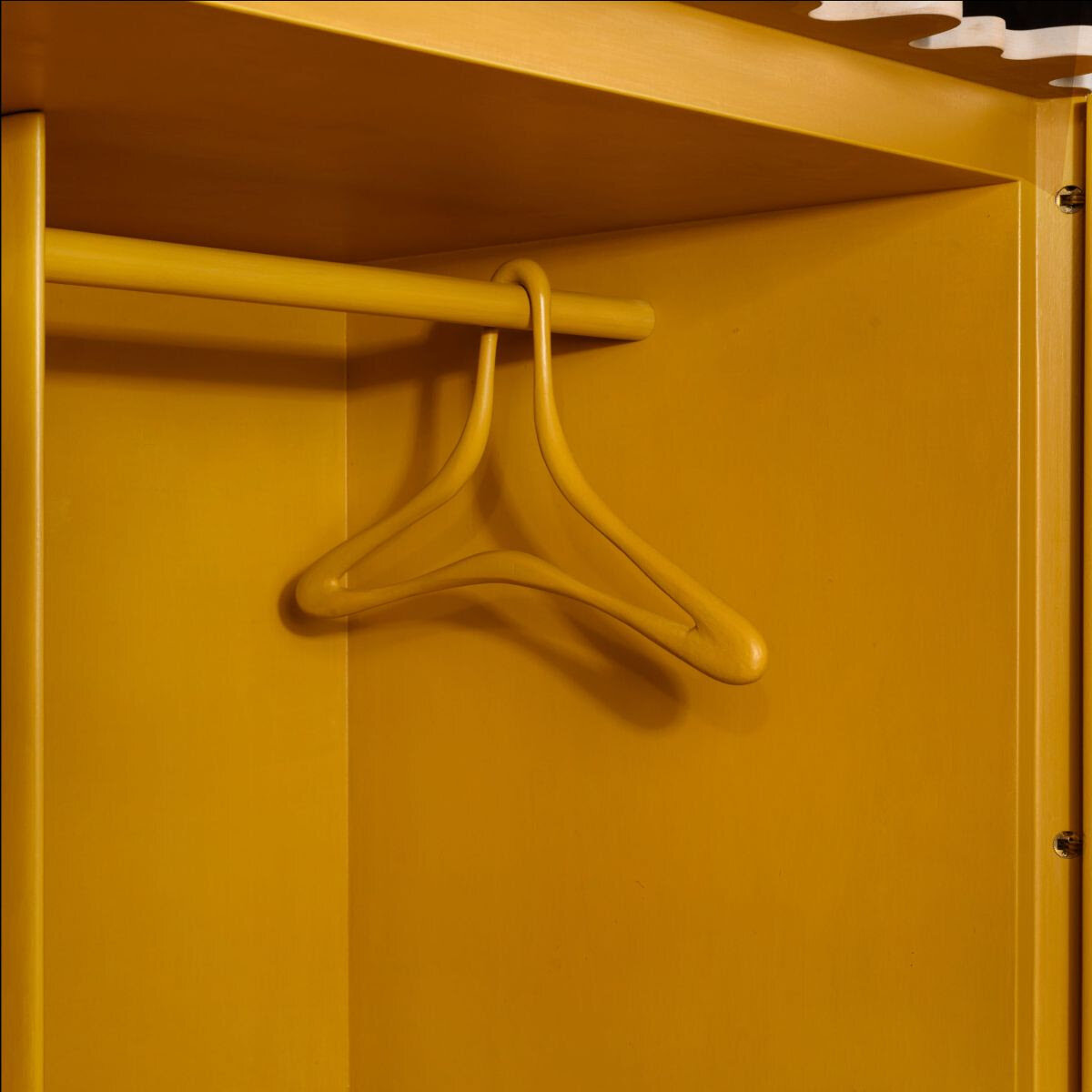The Sculptural Woodwork of Christopher Kurtz
Christopher Kurtz grew up in Excelsior Springs, Missouri and is trained as both a furniture maker and sculptor (having once worked as the lead assistant to Martin Puryear). For Kurtz, these two practices inform and strengthen one another, as wood's innate, malleable qualities become a perfect medium for abstracting and manipulating form.
Linenfold Armoire (Perpendicular Style), made for Objects: USA 2020, exemplifies Kurtz's sculptural furniture. This piece stems from a series of cabinets loosely inspired by medieval carving. He extends this idea, profiling the façade of the cabinet as if it were fluting on the shaft of a highly complex column. The rippling, rhythmic articulation spans from top to bottom, yielding a spectacular one-of-a-kind composition that recalls the trompe-l'œil technique.
The making of Linenfold Armoire, New York, 2020
In describing his piece Kurtz says, “The robe-like double doors in Linenfold Armoire (Perpendicular Style) function as a threshold . . . each door towers in a way that guards the interior . . . Upon entering the wardrobe, the austere exterior is met with the contrast of monochromatic gold-colored milk paint on the interior. Inside there are drawers, a cabinet that when opened reveals a reflective surface made of silver leaf on glass, a horizontal bar holding a captured coat hanger (which feels at times like a component to a surrealist game), and a series of drawers. This yellow/gold color is used across time, geography, and religion as a universal symbol for light, resurrection, hope, and the human spirit.”
Kurtz not only references architecture in his design but socio-economic history as well. Objects: USA 2020 curator, Glenn Adamson, wrote for The Magazine Antiques that “Kurtz was interested to learn, while developing the idea for his armoire, that linenfold, and the Gothic, or ‘perpendicular’ style more generally, reached their height in the wake of the Black Death of the fourteenth century. The relative austerity of the style reflected a shortage of available labor—so many craftspeople had died—but also, as Kurtz puts it, expressed a need for ‘pure expression of form, confronting the gravity of mortality and loss.'"
Christopher Kurtz has gained international attention with his designs and is included in several public and private collections. Recently, Kurtz's work has been included in traveling museum exhibitions, including Against the Grain: Wood in Contemporary Art, Craft and Design at MAD, The Ft. Lauderdale Art Museum, and the Virginia Museum of Fine Arts.
Kurtz has received numerous grants and awards, including the prestigious Louis Comfort Tiffany Award in ‘05. In ‘07, he received a New York Foundation For the Arts (NYFA) Award (Lily Auchincloss fellow). Kurtz currently serves as an advisor for NYFA in the field of crafts and was a Loewe Craft Prize Finalist in 2018. He studied sculpture at the Kansas City Art Institute, Landscape Architecture at The GSD at Harvard University (Career Discovery Program), and received a BFA in sculpture from The New York State College of Ceramics at Alfred University in Alfred, New York.
All photographs courtesy of the artist.







